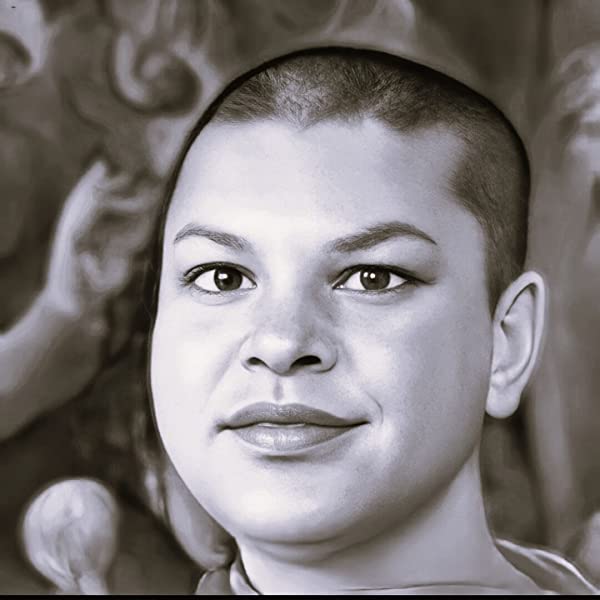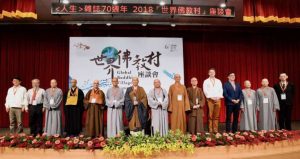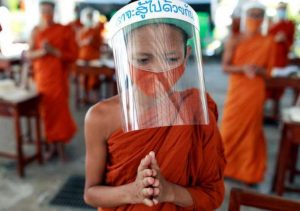Buddhism teaches that a person’s life consists of conception, development, maturation, and death. All humans must endure the unavoidable twin destinies of death and rebirth, which are both natural life events. While this process involves many causes and conditions, birth and death are unique in that they can never be repeated in a single lifetime. Due to the very real grief and pain that death brings, it is traditionally a taboo subject in many societies. However, it is logical and even critical that we engage with this life event with the same attentiveness that we give to birth.
A wise and helpful manual for leading a meaningful life and achieving a fearless death can be found in Theravada monk Ashin Sumanacara’s book Meaningful Life Fearless Death: Spiritual Insights on Death, Dying, Hospice Care and Grief Counseling. Born in Bangladesh, the author is an articulate and empathetic writer and meditation instructor. He spent several years studying and practicing Buddhism under the instruction of various meditators and monastic teachers in Myanmar, Sri Lanka, and Thailand. He graduated from Mahidol University in Thailand with a doctorate in Buddhist studies. His academic writings have appeared in several peer-reviewed international journals. He has taught Buddhist studies courses at Thailand’s Mahachulalongkornrajavidyalaya University and Mahamakut Buddhist University. He currently resides in Canada, where he offers spiritual counseling and teaches meditation.
The book offers readers insights into death from a Buddhist perspective and helps them to understand the significance and purpose of life as understood by Buddhists. It helps readers to make a start in overcoming the natural fear of dying and other unskillful feelings that may interfere with a peaceful death process. The causal relationship between karma, illness, death, and rebirth is presented in detail. It also offers spiritual guidance for those that are in the process of grieving or supporting the bereaved, as well as those providing hospice care. Finally, it outlines some suggestions for embracing death with mindfulness.
The book consists of an introduction and ten chapters. An overview of each chapter is provided in the introduction. However, unlike many others, Ashin Sumanacara’s book does not have an overall conclusion; instead, each chapter is bookended by an introduction and a conclusion. The majority of the sources used in the book’s composition came from Theravada texts, such as the Nikayas.
The search for meaning and purpose in life is covered in the first chapter. The author emphasizes that Buddhism adopts a more spiritual approach to understanding our mortal paths. Buddhism considers human birth to be a rare and unique event in samsara, and it views living a human life as qualitatively different from that of an animal, despite being a relatively non-anthropocentric wisdom tradition.
Buddhism asserts that dependent co-arising underlies both life and death; without death there is no life and vice versa. Natural life occurrences such as birth, aging, illness, and death are considered to be characterized by suffering and it is only by understanding suffering that one can experience spiritual awakening. “We can only be free from accumulated troubles and burdens by experiencing suffering,” Ashin Sumanacara writes. (20)
The second chapter explores several religious viewpoints on death, including those held by Buddhists, Christians, and Hindus, with a focus on the Buddhist position. Like many other traditions, Buddhism teaches that death is the conclusion of one life and the beginning of another in a transmigratory process that, unlike Hinduism, does not involve a soul (atman); for the sentient being does not possess an inherent self (anatta). As a result, death refers to the conclusion of a specific life rather than the extinction of a “person.” Buddhism argues that although humans have experienced many lives and deaths, they cannot be considered qualified to discuss it after merely passing through one.
The third chapter discusses ideas about life after death in the context of rebirth in Indian culture, while the fourth chapter focuses more on attitudes and fears related to death in one’s own life. The author skillfully cites other studies in this area, which reveal that while non-religious people have a more neutral attitude toward death compared with religious people, religious people are more inclined to regard death with an accepting attitude.
The fifth chapter addresses transforming negative attitudes regarding death. It observes that Buddhism holds death as an illusion arising from within our perceptions of ourselves and our egos. Identifying this arising illusion and its source is key to overcoming the fear of death. As the author notes: “We can cope with negative emotions associated with death if we understand how to live meaningfully and then how to die fearlessly . . .” (87)
The sixth chapter, which covers the prevention and management of pandemic diseases, is a crucial one. Unsurprisingly, the author concentrates on COVID-19, which is still devastating lives and livelihoods and serves as a reminder of the impermanence and fragility of life. The coronavirus, in the author’s opinion, is caused by predetermined karma. (95) Ashin Sumanacara refers to the Culakammavibhanga Sutta (MN 135) to support his assertion that the pandemic is a result of both past and present bad karma. He quotes Bhikkhu Bodhi, noting: “Having enjoyed whipping, torturing, and restraining oneself to various forms of pain in previous lives, one has become sick in this life.” (95) In other words, COVID-19 is the result of humanity’s collective karma, which must be repaid for centuries of dominating the Earth and wantonly polluting ecosystems and wasting resources. In the author’s opinion, the wisest course of action is to cultivate good karma and avoid bad karma to prevent future pandemics, which must be done at not just a personal level but collectively, as a society.
The seventh chapter covers end-of-life care and hospice ministry and chaplaincy, offering advice to family members on how to respond and behave toward terminally ill loved ones. Some of these include ensuring the dying person’s psychological comfort, participating in religious chants and prayers, attending to their bodily and environmental needs, remaining by their side, and more. The author notes that the teachings of religions like Buddhism and Christianity can be useful in giving spiritual counseling and end-of-life care. Ashin Sumanacara, being a Buddhist monk, discusses at length the tools that Buddhism can offer.
In order to be patient and kind to oneself while grieving, the eighth chapter discusses the reactions and repercussions of heartbreak and sorrow after a loved one dies, as well as ways to handle grief. The ninth chapter highlights two case studies that illustrate the grief of two women who became nuns after realizing the reality of death. Patacara and Kisa Gotami were two women who endured intense anguish on the passing of their loved ones. They discovered insight and wisdom in the Buddha’s teachings. In the book, their tales are told in such a way that the contemporary reader can learn from them about coping with death. Ashin Sumanacara says of the lessons found in these ancient tales: “We must let go of our grievances and sorrows and prevent them from becoming our burdens to move forward with ease.” (160)
Eight methods to think about death, including the advantages of mindfulness, are discussed in the tenth and last chapter. Being aware of death will naturally refine people’s examination of their interior thoughts when contemplating mortality, which forms the basis of mindfulness. According to Ashin Sumanacara, “Mindfulness of death provides us with a profound understanding of impermanence, change, separation, and uncertainty. Through this meditation, we can better appreciate what is to live.” (179)
Overall, Ashin Sumanacar’s core message is how to lead a meaningful life and die without fear. Engaging with this book can help readers better understand birth, aging, illness, and death—a helpful guide on death, dying, hospice care, and grief counseling, regardless of one’s religious affiliation. Nevertheless, it seems readers will get more out of the volume if they approach it from a Dharmic perspective.
References
Sumanacara, Ashin. Meaningful Life Fearless Death: Spiritual Insights on Death, Dying, Hospice Cara and Grief Counseling. Quebec: Subhashita Books, 2022.
Related features from BDG
Book Review: Rebirth: A Guide to Mind, Karma, and Cosmos in the Buddhist World
Related columns from BDG
Death Dhamma by Margaret Meloni
Related videos from BDG
The Death Dhamma Podcast Season 1
The Death Dhamma Podcast Season 2














